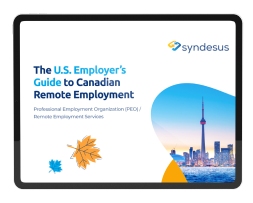Recently, US employers large and small have been cutting tech jobs. Some companies are blaming the pandemic while others blame over-hiring during periods of rapid expansion, but whatever the reason, many US-based tech workers are wondering, “am I next?”
By the end of May 2022, more than 20,000 tech and startup job cuts had been recorded in the United States.
According to data obtained from Layoffs.fyi, Carvana eliminated 2,500 workers, or roughly 12% of its staff. Vroom, a Carvana competitor, also laid off 270 workers or around 14% of its workforce.
Within weeks of laying off more than 80 workers in San Jose, PayPal has begun dismissing staff in risk management and operations jobs.
Other major tech companies like Microsoft, Nvidia, Lyft, Snap, Uber, Meta, Salesforce, and Coinbase have also announced hiring freezes or slowdowns amid tech stocks slumping.
By the end of May 2022, more than 20,000 tech and startup job cuts had been recorded in the United States.
So, where can these highly skilled tech workers go next, particularly H-1B workers who need work visas to remain in North America? Canada is the best option, and here’s why.
Canada’s tech sector continues to grow
Tech workers are drawn to Canada for jobs, but also for a lower cost of living and a better quality of life.
While US tech hubs Silicon Valley, New York City, and Miami have become increasingly costly, Toronto, Canada’s largest tech hub, remains a more cost-effective alternative.
Indeed, thanks to years of investment by local institutions, government agencies, and Canada’s flexible and responsive immigration policies, Toronto has now become the third-largest technology cluster in North America.
Local institutions in and around Toronto are working hard to nourish the tech industry. The Toronto area is home to two prominent universities: the University of Toronto and the University of Waterloo.
The University of Toronto is launching a high-tech innovation center endowed with $100 million in local corporate funds, and when it comes to alumni who have launched billion-dollar enterprises, Ontario’s University of Waterloo was recently recognized as one of the world’s top ten institutions.
The Ontario government also recently passed legislation that forbids employers from enforcing noncompete clauses, which encourages employees to start their own businesses too.
A second Canadian technology center can be found 1,800 kilometers to the east in Nova Scotia.
The province formerly had a reputation for forestry and fishing industries and an aging population, but it is now home to hundreds of new technology firms and businesses, as well as a considerable training program and growing population.
The expanding technology industry in Halifax is transforming Nova Scotia into one of Canada’s fastest-growing technology hotspots. Thanks to a growing ecosystem of businesses, venture capital, and government assistance, the economy is gaining steam.
The number of technology professionals in Halifax has grown by 24% in the last five years, according to global real estate company CBRE.
The city was named seventh on CBRE’s 2021 Tech Talent ranking, which placed the city eighth in a list of 25 emerging technology markets in North America.
Nova Scotia’s $2.5 billion tech sector now has over 26,000 employees and the Nova Scotia government granted $16.8 million in funding to four local institutions to create computer science programs. This is an excellent indication that the tech sector in this province — and in Canada — will continue to flourish!
Canada boasts home-grown tech talent and companies, and the growth of international technology giants in Canada is notable as well.
Another reason that so many technology firms have moved to Canada is because of its many welcoming immigration pathways.
For years, tech firms have been trickling over the border in part due to the cheaper cost of talent and ease of bringing in foreign-born tech workers.
The average yearly compensation for a computer software developer in Toronto, according to Hired, was $117,000 CAD in 2020 (about $90,000 USD), compared with $165,000 in Silicon Valley.
Another reason that so many technology firms have moved to Canada is because of its many welcoming immigration pathways.
Canada has a long history of welcoming highly skilled technology experts from around the world, with tens of thousands of STEM workers coming every year through permanent residency and temporary foreign worker visas.
Canada’s immigration pathways are so appealing because they offer something difficult to achieve in the US: security and a clear path to citizenship.
Canada offers tech workers the best immigration pathways
Talented workers are making their way to Canada for more than just jobs and quality of life boost.
These highly skilled professionals are also looking for work in Canada to find the kind of security that’s difficult to find in the US with an H-1B visa.
The United States restricts the number of new H-1B visas issued to 85,000 each year, and despite the substantial rise in open tech jobs, this cap on new H-1B visas hasn’t increased since 2005. An H-1B visa is valid for three years with the potential of a three-year extension.
H-1B visa holders can apply for a Green Card, but it can be a long process.
The average wait for a Green Card grew from about 2 years and 10 months in 1991 to about 5 years and 8 months in 2018.
Taking a job and moving your family to the US on an H-1B visa can thus be a risk because there is no guarantee that you will be able to get an extension of your visa beyond the first three years.
There’s no guarantee that your employer will sponsor you for permanent residency, and even if you get in line for a green card, the wait can take another decade or more.
And what happens if you’re laid off from the US tech company that is sponsoring your visa?
Canada, on the other hand, offers more security for skilled immigrants, particularly in the technology sector.
With the Global Talent Stream (GTS) program for high-skilled technology workers, Canada has made it more manageable for foreign professionals to work and live in Canada, aiming to increase the number of foreign workers with these skills in Canada.
Best of all, it is possible to apply for permanent residency after 12 months of full-time work in Canada, and once you have permanent residence status, you’re eligible to get most social benefits that Canadian citizens receive, including health care coverage.
You’re also able to live and work anywhere in Canada and apply for Canadian citizenship about four years later.
Canada’s welcoming immigration policies all add up to a highly trained Canadian labor force of 900,000 computer-related experts.
Canada is still an ideal place for tech workers looking for immigration security and for great employers seeking highly skilled talent.
The ease with which international workers are accessible is highly appealing to tech companies searching for fresh talent.
In part because of this — and before the recent rash of layoffs in the US — many American technology firms have succumbed to the temptation of Canadian tech talent and opened operations in Canada.
Microsoft, Google, Apple, and Amazon have all opened offices in Canada. Recently, Twitter has hired more than 100 engineers in Toronto, tripling its Canadian staff.
Across Canada, household names like as DoorDash, eBay, and Pinterest have established comparable presences.
Seeing US tech giants expand into Canada is a vote of confidence for the country’s tech sector which gets a boost from government-sponsored research and development incentives.
So despite some of the current uncertainty rocking the tech industry more broadly, Canada is still an ideal place for tech workers looking for immigration security and for great employers seeking to recruit, retain, or relocate, highly skilled talent.
US tech layoffs force workers to find new jobs — Syndesus can help
Many foreign-born tech workers currently based in the US are either looking for new jobs, or worrying about layoffs
H-1B visa holders might be especially worried about their future in the US, and international talent who would have otherwise tried their luck for an H-1B visa, are now wondering if US tech companies are even hiring.
So, where do these talented tech workers go next?
The answer is Canada.
If you’re looking for a new tech job in Canada and want to work for a Canadian company, Path to Canada, a service provided by Syndesus, can match you with Canadian employers that will sponsor you for a work visa. You could be employed and living in Canada in less than 90 days.
So, if you’re an experienced tech worker in the US and you’ve lost your job, you’re worried about losing your job, or you’re simply looking to get away from the uncertainties of the H-1B visa or the long wait for your green card, join our Path to Canada database as a qualified tech worker candidate and get matched with a Canadian tech employer!
If you’re a US employer who supports your valuable employee’s relocation to Canada, Syndesus can partner with you as an official sponsor of Canada’s exceptional immigration program, the Global Talent Stream. Find out if your employee is eligible for Global Talent Stream through Syndesus’ turnkey PEO (Professional Employer Organization) services and escape the H-1B runaround once and for all.




